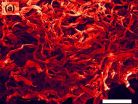(Press-News.org) The amount of government money pumped into dementia and stroke research in the UK has risen significantly in recent years, but it is still way too low when compared with the economic and personal impact these conditions have, finds a study published in the online journal BMJ Open.
The researchers assessed central government and charity research expenditure in 2012 into the UK's leading causes of death and disability: cancer, coronary heart disease, dementia and stroke.
In 2012, all four conditions accounted for over half (55%) of all UK deaths and for 5.5 million disability adjusted life years (DALYs), which combine the number of years of life lost to early death, ill health, or disability.
The amount of funding was compared with the population impact of the individual conditions: prevalence, the number of years lost to early death, ill health, or disability, and the total health and social care costs.
The combined amount of research funding allocated by the government and charities to all four conditions came to £856 million in 2012, almost two thirds of which (64%; £544 million) was allocated to cancer.
Around one fifth (19%; £166 million) was devoted to coronary heart disease, while just 11% (£90 million) was allocated to dementia and even less (7%; £56 million) to stroke research.
That same year, there were around 2.3 million cases of cancer, the same number of coronary heart disease cases, 0.8 million cases of dementia and 1.2 million of stroke.
In 2012 a total of 2.9 million DALYs were lost to cancer, 1.5 million to coronary heart disease, 0.4 million to dementia and 0.7 million to stroke.
The costs of healthcare were highest for cancer (£4.4 billion) and lowest for dementia at £1.4 billion and for stroke at £1.8 billion.
But the social care costs of dementia outweighed the social care costs of the other three conditions combined. And the combined costs of health and social care for dementia came to £11.6 billion in 2012, the researchers calculated.
This was more than double the equivalent costs for cancer at £5 billion, and significantly more than for stroke (£2.9 billion) and coronary heart disease (£2.5 billion).
This means that for every £10 of health and social care costs attributable to each condition, £1.08 in research funding was spent on cancer, £0.65 on coronary heart disease, £0.19 on stroke, and just £0.08 on dementia, the researchers calculated.
Since 2010, there have been substantial changes in medical research funding policies, particularly by government organisations, which pumped 21% of the total share into dementia research and 12% into stroke research in 2012, with cancer attracting 46% of the total spend.
The equivalent figures in 2008 were 66% for cancer, 21% for coronary heart disease, 9% for dementia, and just 4% for stroke.
But the sums allocated by charities have scarcely budged since 2008, say the researchers. Charities are reliant on public funds so this stasis may be down to public perception of risk or a form of ageism, derived from the belief that stroke and dementia are inevitable only in the elderly, they suggest.
Despite the shift in funding priorities, research into the treatment and prevention of dementia and stroke remains underfunded when compared with the economic and personal impact these conditions have, they conclude.
INFORMATION:
Children with type 1diabetes run almost five times the risk of being admitted to hospital for any reason as their peers, finds research published in the online journal BMJ Open.
Pre-schoolers and those from disadvantaged backgrounds are most at risk, the findings indicate.
The number of new cases of childhood type 1 diabetes has been rising steadily by around 3-4% a year, the evidence shows, and the risk of death among those with the condition under the age of 30 is nine times that of the general public.
The researchers analysed the causes of hospital admission after ...
A new type of technology that senses minute changes in the levels of particular compounds in exhaled breath, accurately identifies high risk changes which herald the development of stomach cancer, reveals research published online in the journal Gut.
The findings prompt the researchers to suggest that the technology--known as nanoarray analysis--could be used not only to test for the presence of stomach cancer, but also to monitor those at high risk of subsequently developing the disease.
Gastric cancer develops in a series of well-defined steps, but there's currently ...
1. Task Force weighs evidence on diabetes screening
Researchers for the U.S. Preventive Services Task Force (USPSTF) have completed a systematic evidence review to inform an upcoming update of Task Force recommendations on screening asymptomatic, nonpregnant adults for type 2 diabetes. The review is published in Annals of Internal Medicine .
Approximately 21 million persons in the U.S. received a diabetes diagnosis in 2010 and an estimated 8 million cases went undiagnosed. Screening asymptomatic persons for diabetes may lead to earlier identification and earlier ...
While a debate was raging between scientists and government regulators on how best to explain to patients the risks of participating in clinical research studies that compare standardized treatments, a team of bioethicists boldly went where no experts had gone before -- to the public.
What the respondents said surprised them: Keep it simple, but always ask permission, even when the research only involves gathering data from anonymized medical records.
"We didn't anticipate that people would want to grant permission for medical record searches, a research method that ...
ANN ARBOR--Research led by the University of Michigan Life Sciences Institute has identified a gene critical to controlling the body's ability to create blood cells and immune cells from blood-forming stem cells--known as hematopoietic stem cells.
The findings, scheduled for online publication in the Journal of Clinical Investigation April 13, provide new insights into the underlying mechanics of how the body creates and maintains a healthy blood supply and immune system, both in normal conditions and in situations of stress--like the body experiences following a bone ...
DALLAS, April 13, 2015--The American Heart Association (AHA) released new recommendations today to address gaps in common standards around comprehensive workplace wellness programs (CWWPs). The recommendations improve the design, measurement and recognition of CWWPs, and, if adopted by employers, could significantly impact efforts to improve the cardiovascular health of the American workforce.
An advisory panel of experts in population and workplace health, cardiology and preventive medicine conducted the review, which includes an extensive evaluation of workplace ...
WASHINGTON, DC - A medicinal liquid form of marijuana may show promise as a treatment for children with severe epilepsy that is not responding to other treatments, according to a study released today that will be presented at the American Academy of Neurology's 67th Annual Meeting in Washington, DC, April 18 to 25, 2015.
The study involved 213 people, ranging from toddlers to adults, with a median age of 11 who had severe epilepsy that did not respond to other treatments. Participants had Dravet syndrome and Lennox-Gastaut syndrome, epilepsy types that can lead to intellectual ...
Tropical Cyclone Solo was dissipating over the Southwestern Pacific Ocean when NASA's Aqua satellite passed overhead on April 13, 2015.
On April 11 Tropical Cyclone Solo spawned warnings in New Caledonia as it passed by. By April 12, the warnings were dropped and wind shear had taken its toll on the storm weakening it.
On April 12 at 0300 UTC (April 11 at 11 p.m. EDT), the Joint Typhoon Warning Center (JTWC) issued their final bulletin on Solo. At that time it was 116 nautical miles north of Noumea, New Caledonia near 20.2 south latitude and 165.7 east longitude. Solo ...
Skin is remarkably resistant to tearing and a team of researchers from the University of California, San Diego and the Lawrence Berkeley National Laboratory now have shown why.
Using powerful X-ray beams and electron microscopy, researchers made the first direct observations of the micro-scale mechanisms that allow skin to resist tearing. They identified four specific mechanisms in collagen, the main structural protein in skin tissue, that act together to diminish the effects of stress: rotation, straightening, stretching, and sliding. Researchers say they hope to replicate ...
TAMPA, Fla. - Moffitt Cancer Center researchers have developed a new method to identify a previously unknown structure in a protein called MDMX. MDMX is a crucial regulatory protein that controls p53 - one of the most commonly mutated genes in cancer.
Known as the tumor suppressor gene, p53 protects the body from cancer development by ensuring that DNA remains intact and does not have mutations. If p53 senses DNA damage, it can either stimulate the cells to repair its DNA, or cause cells to stop growing and undergo cell death. Because of its functions, p53 is often ...

